The heads of global vehicle distribution at BMW Group – Eugen Schantini and Thomas Wiech – tell Marcus Williams about the network strategy and tools the carmaker is using to manage disruption, secure capacity and plan ahead for a more sustainable outbound supply chain
BMW Group is moving 2.6m vehicles to customers globally on an annual basis and the key to ensuring quality and punctuality in their delivery is a clearer view of outbound distribution from the plants to the dealer network. To do so the carmaker is using the latest digital technology to gain transparency and optimise routes and schedules, as well as adapt to disruptions and maintain a flexible outbound supply chain. It is also nurturing long-term partnerships and closer communication with its transport partners.
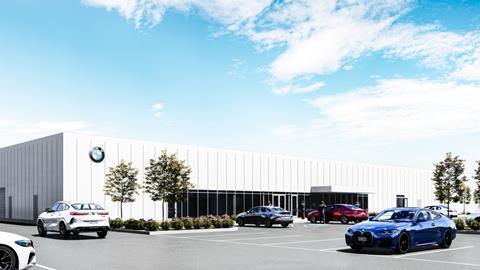
Eugen Schantini is head of global vehicle distribution at the carmaker and Thomas Wiech is head of transport planning and steering for vehicle distribution. Together they are responsible for BMW Group’s entire outbound transport network. Schantini points out that it is important to know the location of every single vehicle in the network. Given the supply chain disruption during and since Covid, BMW Group has also been identifying contingency plans and alternative ways of getting the cars out there in good time.
“It is like a crystal ball in that respect, looking at what could happen in the future and planning ahead for incidents that might come up,” says Schantini. “We’ve got a sophisticated forecast tool for all transport that looks for tomorrow, next week, next month, or for the next several years, and that is something we really like to share with our logistics partners.”
“We’ve got a sophisticated forecast tool for all transport that looks for tomorrow, next week, next month, or for the next several years, and that is something we really like to share with our logistics partners” – Eugen Schantini, BMW Group
BMW Group also constantly reviews its network performance and is pushing hard for even greater flexibility, according to Wiech.
“For example, we’d like to have an alternative harbour in every single country worldwide,” he says. “We’ve already got alternative harbours for the critical markets, but something could happen in a smaller market as well, and that is something we are preparing the network for. I would call it a permanent stress test and always having a plan B.”
Chartering space
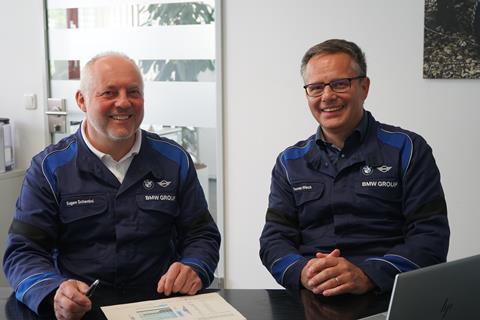
BMW Group is not alone in looking for flexibility in delivery routes. There have been tough lessons learned through the capacity shortages and congestion that have affected vehicle logistics during and since the pandemic. Carmakers have turned to chartering ocean vessels and road transport to move their vehicles.
BMW Group had to charter vessels when capacity was tight but its preference is working with its transport partners on alternative routes and swapping available capacity.
“Sometimes we’ve actually transported cars all the way from the US west coast to the east coast for emergencies, so we are super flexible in that respect,” says Schantini, “but if we cannot find any alternatives for the cars that are sold and in demand we have agreements with our purchasing department and our process partners to charter a vessel.”
With regard to road transport capacity in Europe, Wiech freely admits the situation has been a nightmare and one of its transport partners equated the situation two years ago to falling off a cliff. BMW Group has worked hard to find alternative strategies to maintain deliveries in Europe but, again, had to charter a significant amount of trucks dedicated to its own vehicles. The carmaker now has a team directly managing chartered trucks but it has also been working on contract terms with its transport providers and has found alternatives that have enabled it to cut chartered capacity on the road by 90%. The plan is to get that down to zero.
Rail disruption
There are also disruptions to the rail network in Europe, principally in Germany, where state-run rail provider Deutsche Bahn (DB) is carrying out extensive re-eingineering and upgrade work to the rail network. In 2022, DB began upgrades to 1,800km of its rail track, along with 140 bridges and 800 stations. That is disrupting the movement of freight and has reduced available capacity for goods movements by more than a third. The DB network has also been hit by strike action taken by the GDL union over the last year. However, Schantini says that BMW Group’s use of private rail providers has protected it to an extent from this disruption and the plan remains to push more volumes to rail.
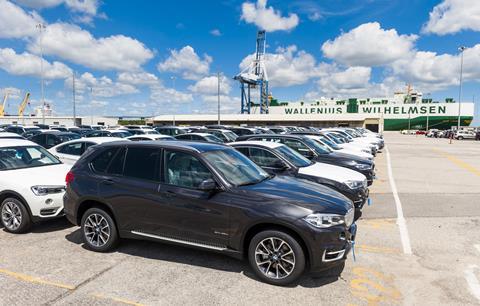
He is happy to admit that BMW Group is not a logistics provider and its partners are better at managing the transport of its vehicles but, at the same time, the carmaker has optimised its internal processes and if there is a problem with one line of transport it can organise a plan B backup within 24 hours with its partners.
Sharing the estimates
What is important in guaranteeing efficient shipments is close communication with outbound logistics providers and shared transparency across the entire supply chain. That includes everyone being aware of ETA and estimated time of delivery (ETD), even for vehicles being made in Germany and shipped to China.
“All of our partners have the same information,” says Schantini. “It works really well and on top of that it’s double checked with compliance.”
He explains that the logistics team has management meetings with all of BMW Group’s supply chain partners, including global shipping companies, port operators and rail providers.
“Everyone has got the same view on the situation and that helps a great deal,” he says. That helps to optimise the network and find alternative routes, including the use of inland waterways for vehicle shipments to port. Germany’s use of inland waterways for freight movement is well-known and provides another option for BMW Group if the going gets tough and there is a bottleneck elsewhere in the distribution network. The key point is that all logistics partners are aware of the alternatives.
Digital supply chain planning
The information shared with those partners is based on the latest digital technology and BMW Group very recently upgraded its SAP S/4 Hana cloud-based enterprise resource planning (ERP) software for logistics. What is important, says Thomas Wiech, is the quality of the data being fed into that system. BMW has numerous online dashboards providing a rich variety of information to the Transport Steering team based in Munich.
“We can see how many vehicles are at Bremerhaven port at the press of a button, for example. Every other day we have a meeting with the guys in Bremerhaven to discuss the forecast and how the stock level is going to develop” – Thomas Wiech, BMW Group
“We can see how many vehicles are at Bremerhaven port at the press of a button, for example,” says Wiech. “Every other day we have a meeting with the guys in Bremerhaven to discuss the forecast and how the stock level is going to develop, for example. And we’ve got this quality information pretty much throughout the supply chain.”
BMW Group is also using the GPS data provided by the telematics in each vehicle. “Whenever they are being moved, our system will gather the location,” says Wiech. “Again, that is in the dashboard at a press of a button, and I know exactly where the car is in which location.”
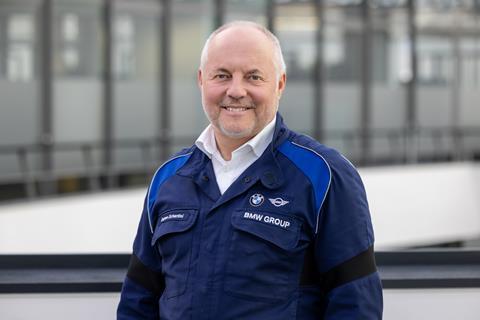
That information is generated only when something is happening to the vehicle, if it is being moved or the door has been opened for example. If nothing is happening to the car no signal is sent but that also indicates whether there is delay in shipment. Based on that information the outbound logistics team can provide an ETA to the dealers and on arrival the telematics sharing is switched off.
Across the business BMW Group is capturing data on a range of things, from transport restrictions, costs, carbon emissions and capacity availability and the vehicle distribution teams are centralising the information for vehicle and plant allocation simulations and sharing it with the rest of the company.
Sustainable shipping
In terms of carbon emissions in the supply chain, BMW Group is taking a structured approach that includes strategy meetings with logistics and transport providers.
“Also, on a management level, we’re discussing what could we can do in the long term and what are the next steps to take,” says Schantini. “We started this three years ago, and while there is still a long way to go, we’ve been able to implement quite a few lean and sustainable processes.”
One example is the use of LNG vessels for vehicle shipments on routes between Europe and China. There are now more pure car and truck carriers (PCTC) vessels being built to address the shortage of capacity in ocean transport and a lot of them are being built to run on alternative fuels rather than traditional maritime bunker fuel.
“We’re discussing that whenever there is a new tender or new process, or there is a new demand, we actually prioritise LNG vessels,” says Schantini. “That is something that works really well.”
Rail also plays its part in sustainable logistics. While the rail network is facing disruption in Europe, BMW Group is “fighting for dear life for train transport”, says Wiech, but the carmaker has been able to transport the majority of its cars by rail to the ports of export globally. For example, in the US, BMW Group has made 100% of the shipments from its Spartanburg plant to the port of Charleston by rail. In Europe it is moving 70% of vehicles shipped from its Dingolfing plant in Germany to the ports and it wants to increase the number of vehicles shipped by rail in Europe. To do so it is pushing the private rail freight companies very hard to provide those services, though that is currently more of a problem in Europe given the engineering work on the rail lines and stations.
“In the UK they are using biofuels for our dealer distribution network and here in Munich we’ve got three or four etrucks already in use shuttling between our the Munich plant and our compound that is close by” – Thomas Wiech, BMW Group
BMW Group is also working with its road haulage providers on the use of biofuels and electric trucks, both of which are being adopted in the UK and Germany.
“In the UK they are using biofuels for our dealer distribution network and here in Munich we’ve got three or four etrucks already in use shuttling between our the Munich plant and our compound that is close by,” says Wiech. “Really, we would like to extend the network a great deal and that’s what we are actually discussing with our partners in the long-term strategy meetings. Are we where we’d like to be? No, but we’ve taken some decent steps and we’re working towards a 100% solution.”
BEV supply chain
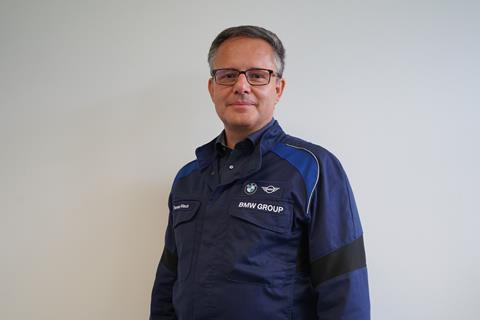
The efforts at making outbound logistics more sustainable ties in with carmaker’s efforts at making cleaner battery EVs (BEVs). The EV supply chain currently produces more emissions from well to wheel than combustion-engine vehicles and a large part of that is because of battery material sourcing and delivery. However, BEVs are also heavier because of the battery and that can cause occasional bottlenecks because of restrictions to truck axle weight. The load factor per unit is reduced and that is something that has balanced out sustainably if increasing numbers of larger BEVs have to be moved.
“In Europe, there is a 1.5 tonne maximum axle weight, so once you exceed that weight, you might struggle with the existing trucks. Solving that is something we are really looking into with our network,” says Wiech.
Like other carmakers, BMW Group is looking for ways to cut emissions from inbound and outbound logistics to compensate and to marry clean products with clean delivery of them.
“Transporting EVs with an old diesel truck doesn’t align with our approach to making cleaner vehicles and that’s why I like the challenges for logistics,” says Wiech. “The message to the customer is the wrong one. I think we have to reduce our carbon footprint a great deal and we’re doing a good job in that respect, working hard towards it.”
However, currently the automotive industry needs more sustainable transport capacity across the modes. There are not enough LNG vessels or etrucks and the technology is not up to scratch. It is a priority for BMW Group to enlarge its sustainable transport footprint.
“We’ve got to work hard and settle long-term contracts to make it worthwhile for our partners to invest in these sustainable technologies,” says Schantini.
On the ocean, new vessels builds are equipped for heavier BEV volumes but the older vessels are not and the decks are not able to support high volumes.
The other factor is supporting the outbound distribution of BEVs with supporting charging infrastructure for the vehicles and the transport moving them.
“If we ask for an etruck in Munich, the second question will be where can I load it or charge it?” notes Schantini. “We’ve organised charging stations on our compounds amongst other measures.”
“We are making sure that all our compounds and harbours are actually kitted with sufficient EV charging” – Eugen Schantini, BMW Group
BMW Group’s BEVs are being charged from production with sufficient battery charge, around 30%. However, in the course of delivery a vehicle may get stalled for one reason or another and then the charge will decline so it is important to have charging outlets at different points in the supply chain.
The carmaker is also urging its port terminal operators to install the necessary infrastructure to charge vessels at berth from the shore (cold ironing) rather than those vessels using their own power. Infrastructure also has to be in place for the vehicles and for the trucks delivering those vehicles.
“We are making sure that all our compounds and harbours are actually kitted with sufficient EV charging,” says Schantini.
Logistics management mindset
The main lesson BMW learned from the pandemic is that logistics disruption is the new normal and being prepared to cope with it is critical to the company mindset. Part of that preparation is having a flexible supply chain.
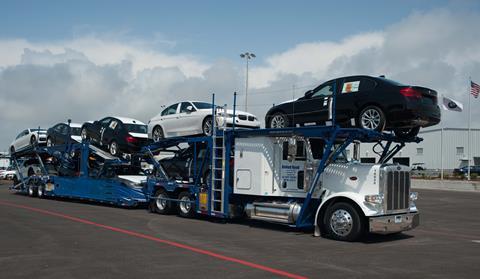
“We need flexible alternative supply chains. It is a must for the future. You’ve got to be prepared. We have set up a great deal of flexibility and we stress test our system and our network all of the time to work out could happen,” says Wiech.
That preparation has proved useful since the pandemic with geopolitical problems in shipping through the Suez Canal and Red Sea, as well as movements through the Panama Canal, which have been caused by drought. BMW had a plan in place. It also had strong partnerships.
“If you’ve had a really hard time in logistics, and we all have, that’s when the long-term partnerships pay off,” says Wiech. “They are a key asset for us.”
BMW Group is investing in these partnerships in a lot of positive ways, focusing a lot of time on management and operations with key partners. It is paying off and providing momentum for further improvements. One of those improvements is terminal investment at the ports to secure capacity for a fixed rate.

“We understand that we have to invest in a multi-storey car park, for instance,” says Wiech. “We have to invest in sustainable long-term solutions. It gets challenged because we’re not a charity, but the management mindset is that efficient logistics don’t come for free, and neither does flexibility, and therefore we have to invest in it.”
Supply chain disruption has made it clear that logistics is a central function in improving company profitability and logistics teams have an input into management board decision making. Logistics bottlenecks were not up for discussion three or four years ago. Now they are.
“Over the last three years, we’ve learned a great deal,” says Wiech. “That’s why the relationships and the teamwork with our sales teams and with our plants is so closely knitted. That is something that goes up to the board level. They are listening to us and they’re helping us a great deal. That’s a clear-cut mindset and a clear-cut enabler for BMW.”
Navigating the never normal in logistics
At this year’s Automotive Logistics and Supply Chain Europe conference Dr Michael Nikolaides, senior vice-president of production network, supply chain management and logistics at BMW Group, said that managing a supply chain with the scope of BMW Group’s is a challenge at the best of times, let alone during a volatile market environment. He thinks volatility is here to stay.
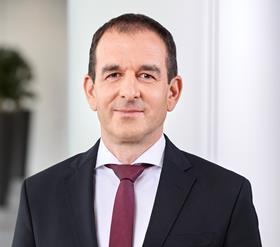
“I assure you, volatility will stay and we should prepare together for volatile market demand, geopolitical tensions and everything which might come,” he said.
BMW is now empowered to make strategic decisions across the carmaker’s different business areas to protect profitability and inventory management.
“To make that work, we increased the frequency [of meetings] and we are able to have ad-hoc meetings if something happens, and make decisions very fast,” said Nikolaides. “We also improved a lot on data transparency. Last but not least, we have every department involved.”
However, he warned that digitalisation is needed in tandem, as without it, global decisions can’t be taken at the right speed.
Nikolaides also stressed the importance of choice. BMW is rolling out the Neue Klasse EV platform from 2026 onwards across its global network. The most important task for its logistics and supply chain management is how it does that in the most intelligent way, because it is difficult to predict demand for five or ten years down the line.
In its financial results issued in March BMW said it produced and sold 2.55m cars last year, out of that 375,000 units were purely electric globally, accounting for 15% of sales.
“And we did that in a very profitable way, hit our Ebit margin of 9.8% in auto,” added Nikolaides. “We also did all that compliant with CO2 regulation in Europe. Our emissions from our complete European fleet went down to 101.2 grams on average.
Of course, all of this is expensive, but Nikolaides said that sometimes the best solution isn’t the cheapest one, and collaboration and partnership can help with this too.
“The transformation of the automotive industry costs a lot of money, and you have to invest in research and development,” he said. “The automotive industry only works together [in partnership] and if we prepare and have the mindset of not being afraid of competitors coming to the market, be it from China or anywhere else in the world.
Topics
- BMW
- Digitalisation
- Editor's pick
- Electric Vehicles
- Europe
- features
- Features
- Finished Vehicle Logistics
- Green Freight & Transportation
- Infrastructure Logistics
- Inventory management
- Lean Logistics
- Lean Transformation
- North America
- OEMs
- People
- Ports and processors
- Rail
- Road
- Shipping
- Suppliers
- Supply Chain Planning
- Sustainability
- Transport Mode
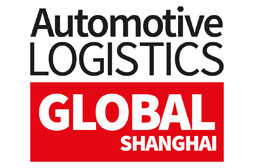
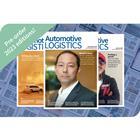

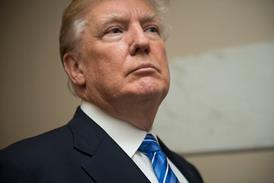
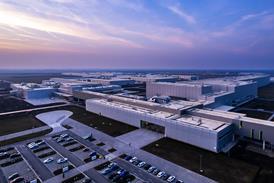

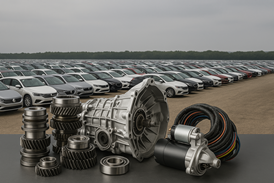

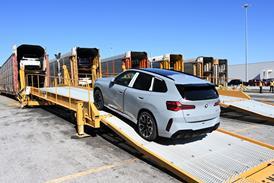
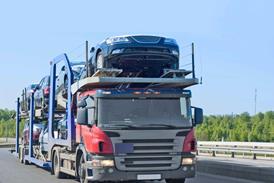
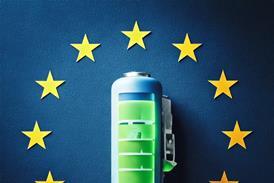

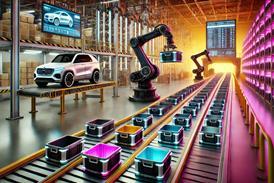
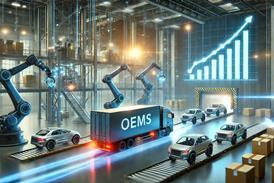
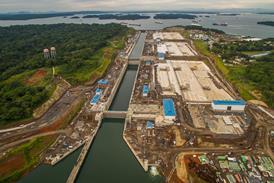
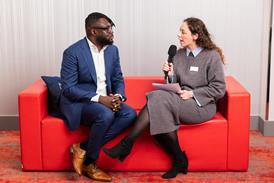
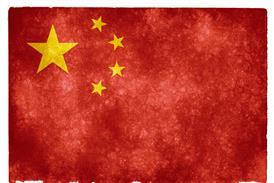

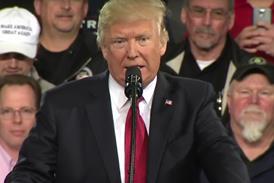
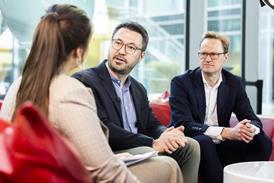
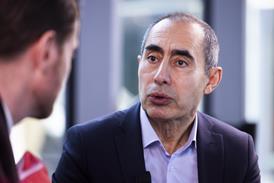

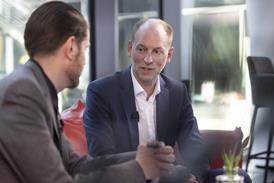
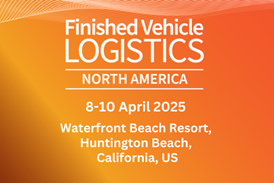
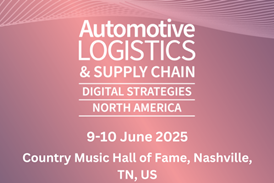
![Global[1]](https://d3n5uof8vony13.cloudfront.net/Pictures/web/a/d/s/global1_726550.svgz)
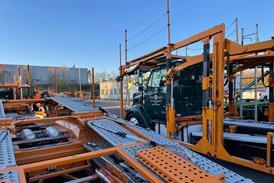
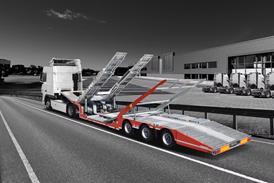
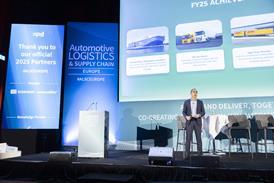
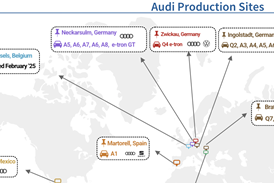
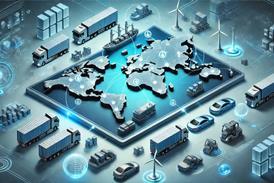
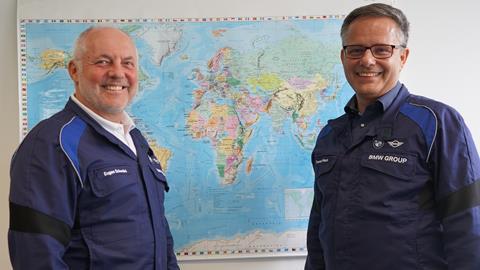
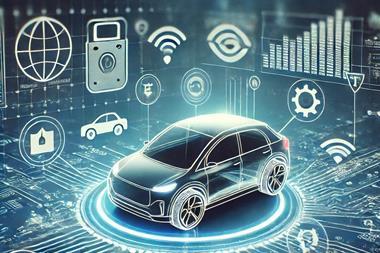
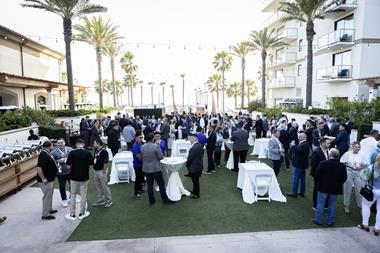
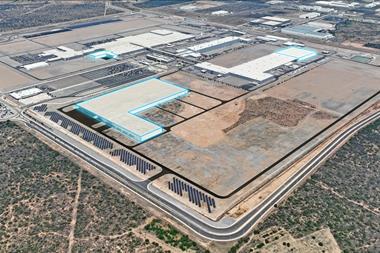
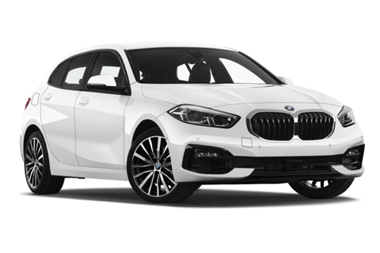
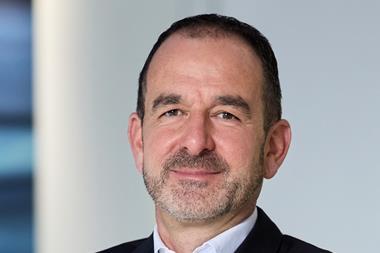
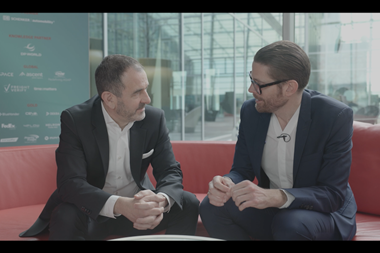



No comments yet